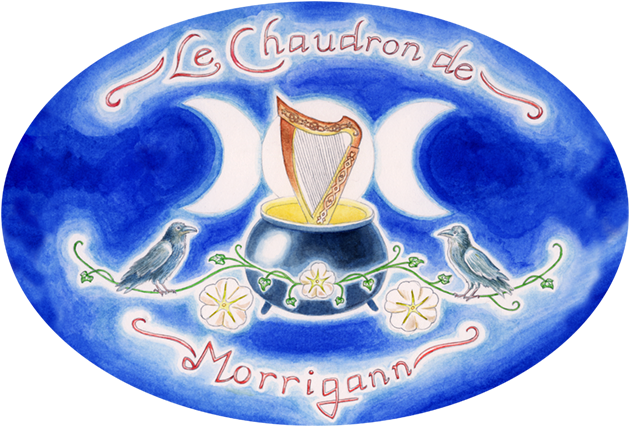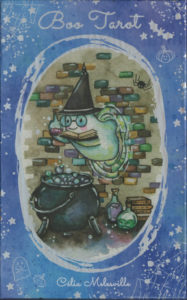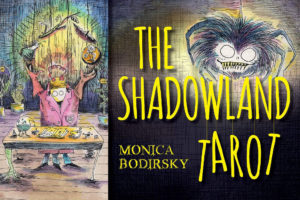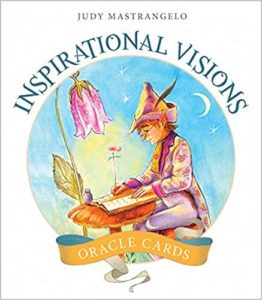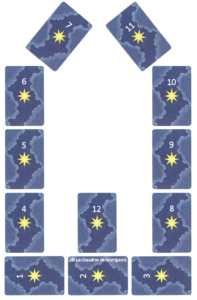Contact :
Mabon’s Prison (Mabon, autumn equinox)
Who is Mabon?
Mabon and the autumn equinox
It is only recently that the sabbat corresponding to the autumn equinox was given the name of Mabon, son of Modron, who is a god belonging to Welsh mythology. Presented as the oldest man in the world, he is among other things the god of eternal youth and is associated with the sun gods known in other Celtic traditions.
The Welsh myth
According to the legend told in the Mabinogion, he is kidnapped from his mother Modron (who is an incarnation of the Mother Goddess) when he is only three nights old. Taken to a place nobody knows about, no one knows anything about his abduction, not even whether he is dead or alive.
In the tale of Culhwch’s quest to win his beloved Olwen, Culhwch engages in a series of trials. Each one of them enables him to succeed in the next one. One of these trials consists in finding Mabon. Culhwch has to release him from his prison but before he can do that, he first has to find information that will reveal to him where Mabon is held captive. In this quest, King Arthur offers his help to Culhwch and takes his knights with him. Culhwch and his companions investigate by questioning several animals, but none of them knows where Mabon is nor whether he is dead or alive. Each creature directs them to an animal that is older than them and who might have heard something that could help them. As a matter of fact, Mabon is the oldest man on earth for he was there before anybody else. As the story goes on, the only animal who may know what happened to him is the Salmon of Llyn Llyw, who happens to be the oldest animal on earth. The companions find him and he leads them to the prison where Mabon is held, which is identified as Gloucester. At the foot of the prison, Culhwch and his fellows hear lamentations. When they ask who is crying so hard, Mabon names himself. The companions engage a fight and release him.
Symbolic meaning
Symbolically, Mabon was born twice: the first time from his mother Modron, and the second time with his release by Culhwch. Though he is a god, he helps the humans with whom he has peaceful relationships. He thus belongs to both worlds (divine and human), which reflects what happens at the autumn equinox for which he recently became a symbol. Representing light, Mabon is indeed kidnapped and held captive in a prison underground, that is to say in the darkness. Here as well as at the equinox, darkness is victorious over light.
Object
During his long detention, Mabon is held in a prison underground and thus in the dark, in which he is forced to live and which he has to accept. This introspective spread was designed especially for the autumn equinox and invites the querent to explore their own part of darkness so as to release themselves from the prison built by their fear of it.
How to proceed
After shuffling and cutting the deck, draw eleven cards and lay them out as follows:
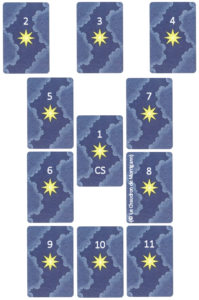
Interpretation
The querent
Card 1 represents the querent in their prison and the way they deal with their own darkness. This card alludes to Mabon as he is imprisoned in Gloucester and to the obscurity that surrounds him during his long captivity.
The prison
The top of the crenelated tower
Cards 2, 3 and 4 are the top of the tower that holds Mabon prisoner. They show what prevents the querent from finding a balance between light and darkness and the reasons why they are afraid of their dark side.
The walls
Cards 5 and 6 are the first wall of the tower. They enlighten the difficulties that will be encountered by the querent during their introspection.
Cards 7 and 8 build the second wall. They picture what will help the querent in their introspection and the personal resources in which they will find what it takes to accept their dark side and be at peace with it.
The ground
Cards 9, 10 and 11 are the prison’s floor. They show how the querent can be at peace with their own darkness and balance shadow and light within themselves. They describe what they will gain from their introspection. Card 9 gives some advice about how the querent can achieve this. Card 10 is what grounds them both in his bright and dark sides. The card shows what they can hold on to in order to preserve this fragile balance. Card 11 takes card 10 further by picturing what they will gain in this and insists on the strengths which will develop inside of them as a consequence. It is a kind of opening and can be a synthesis.
Further remarks
This spread is shaped as a crenelated tower to refer to the prison in which Mabon is held captive. In terms of structure, it is important to note that the querent have a central position, between the walls of the tower in order to show what makes them feel prisoner of his dark side, which they have not “tamed” yet. The roof is what prevents them from seeing the daylight, but also what triggers their introspection since being deprived of light, they have no other choice than to face it. The two walls are on the one hand what holds them back and on the other hand what releases them. The ground depicts quite logically what makes it possible for the querent to find a balance by finding a sort of milestone that will help them grounding.
The main elements of the legend and the symbolism behind it are used in order to insist on the perfect balance between light and darkness which the querent can achieve within themselves in the same way as day and night are the same length at the autumn equinox. By searching for peace with their dark side at this time of the year, the querent are reenacting a myth on a personal level, in accordance with the cycles of Nature.
Which decks for this spread?
This spread can be done with any tarot or oracle deck (except Lenormand decks, which have their own system). However, considering the nature of the inspiration here, the most interesting decks to use are those with a Celtic orientation. Those who want to remain very close to Welsh mythology in general and to the Mabinogion in particular will be delighted with Anna-Marie Ferguson’s, Llewellyn Tarot, for this gorgeous deck explores those legends in a very interesting way. The Arthurian legend, which includes the Mabinogion, is also remarkably illustrated in another amazing tarot deck by Anna-Marie Ferguson called Legend: the Arthurian Tarot.
Those recommendations are, of course, not the only options. They are here only to help you take all the benefits you can from this spread as well as of the sabbat by using tools that fit the moment in a very accurate way. This spread can be done with any deck as long as the querent like it. However, try as much as possible to use decks which favor introspection and self-exploration.
(© Morrigann Moonshadow, September 21st, 2014; trans. September 24th, 2014. Further reproduction prohibited.)
